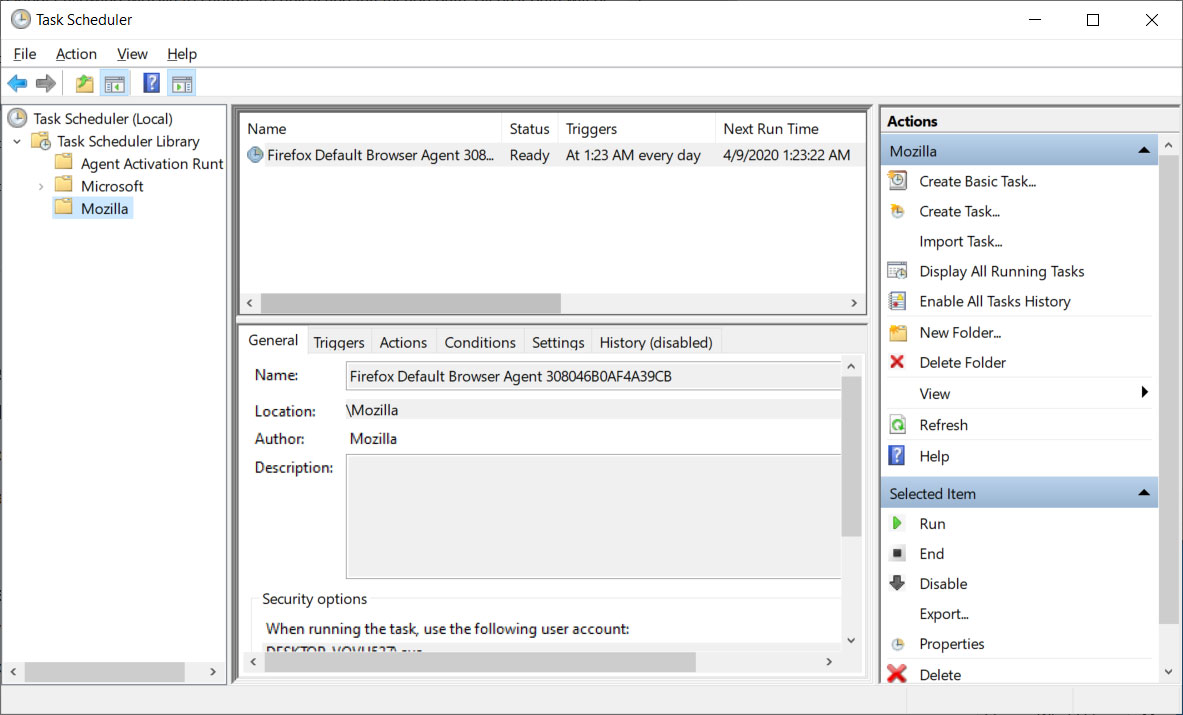Firefox Default Browser Agent
Google Chrome and Mozilla Firefox come with built-in features that allows users to change default user agent, however, it is not possible to define a particular user agent on a per-site basis. If you want such a functionality, have a look at User-Agent Switcher for Chrome and UAControl for Firefox – both these extensions allow you to set specific user agents for certain domains you want.

On the new Firefox tab, right-click and select Undo Closed Tab. The Agent Browser will attempt to launch again. In some cases, the Agent Browser will start correctly and restore the association; in other cases, it may bring up a dialogue box to ask if Agent Browser is the preferred program for this link. Responding yes will associate it. Firefox Developer Edition. Get the Firefox browser built just for developers. Check out the home for web developer resources. Firefox Reality. Explore the web with the Firefox browser for virtual reality. Donate your voice so the future of.

User-Agent Switcher for Chrome

Install the extension from Chrome Web Store and head over to its settings – chrome-extension://djflhoibgkdhkhhcedjiklpkjnoahfmg/options.html. In the left menu, click on Permanent Spoof List.
Then enter the domain of the particular website, choose the desired user agent you want to assign from the dropdown menu, and click on Add. That’s it. Refresh the page and you should see your selection in effect. Extension icon in the Chrome menu shows the active profile.
All specified domain are listed below the form, from there you can delete it later if you want.
UAControl for Firefox
Install UAControl and restart Firefox to enable the add-on. After restart, go to Firefox menu > Add-ons > UAControl > Options. This will open a dialog window as seen below:
Here, click on Add Site, enter site domain, choose Custom and enter the custom user agent you want, and hit OK to save changes.
Unlike the extension for Chrome, in UAControl you need to manually enter user agents. If you need a list of that, have a look at useragentstring.com. On this site you will find user agent strings for crawlers, web browsers, mobile browser, link checkers, and a lot more.
That’s all. After the initial setup process you don’t have to worry about these settings anymore. You can continue using your browser as you normally do, and websites would behave the way you chose.
Related tips:
There are a whole bunch of reasons you may want to trick a web site into thinking you’re using a browser other than Firefox. Maybe you’re a web developer and need to see what a site looks like in another browser. Maybe a site only allows certain browsers and you don’t have access to them. Whatever your reason, this guide will show you how to use the User-Agent Switcher and Manager add-on for Firefox so that you change the user-agent that Firefox uses to identify itself to a different one.
- Head over to the User-Agent Switcher and Manager add-on page and install it as you would any other Firefox add-on. Once it’s installed you’ll see a new icon in the upper-right corner of Firefox.
- When you click the User-Agent Switcher and Manager icon a large window will pop-up.
- To change the User-Agent for Firefox, start by clicking the Browser menu from the upper-left corner of the User-Agent Switcher and Manager pop-up window. From that list, choose the browser you whose user-agent you want to use. In this example, I’m choosing Safari.
- Next, click the Operating System menu (it’s right next to the Browser menu). I’ve opted to use iOS.
- Now select the version of the browser you want to use.
- If you only want the current window (or tab) to use the alternate user-agent, click the Window button. If you want to use the new user-agent across all windows and tabs, click the Apply button.
- The User-Agent Switcher and Manager icon will change, indicating the new user-agent that your current window/tab is using.
- Click the Refresh Tab button to reload the page you’re currently viewing. This will send the ‘new’ user-agent to the web site and it will load as if you’re using that browser.
- As you can see in the screenshot below, YouTube now thinks my browser is Safari for iOS (iPhone/iPad) and it has loaded the mobile version of YouTube.com.
- When you’re done and want to switch back to the default Firefox user-agent, re-open the User-Agent Switcher and Manager pop-up window and click the Restart tab if you selected Window back in step #6. If you selected Apply so that the new user-agent was applied to all of your tabs and windows, instead of clicking Restart, click the Reset button.
- That’s it! You can now use Firefox to ‘trick’ web sites into thinking you’re using a browser that you’re not actually using.
For more Firefox tips and tricks, be sure to scroll through the Firefox category.
Firefox Default-browser-agent.enabled
